The 25 best places to visit in the French Riviera

As a local, I know this place like the back of my hand, so here’s my selection of places not to be missed when visiting the Côte d'Azur:
Sunshine, the Mediterranean Sea, chirping cicadas and the smell of olive trees: this is the image that immediately springs to mind when thinking about the Côte d'Azur and all it has to offer. It’s an area full of delights that merits at least a two-week stay. Of course, you can’t visit the Côte d’Azur without visiting the iconic and somewhat glamourous cities of Nice, Cannes, Antibes and Saint-Tropez. Enjoy bathing in the waters of Saint-Jean-Cap-Ferrat, St. Raphael, Mandelieu-la-Napoule or Sainte-Maxime. And whatever you do, don’t just settle for a beach holiday: venturing inland is just as rewarding. Mougins, Le Lavandou, Grasse and Vallauris are beautiful gateways to the Nice countryside and the Var department. And why not take to the hills and mountains and visit the unmissable perched villages of Eze, Vence, Saint-Paul-de-Vence and Ramatuelle. And last but by no means least, you can enjoy a complete change of scenery by visiting the Lérins or Hyères islands ... So, are you now ready to discover the French Riviera?
Tourist attractions
Our selection of must-see places
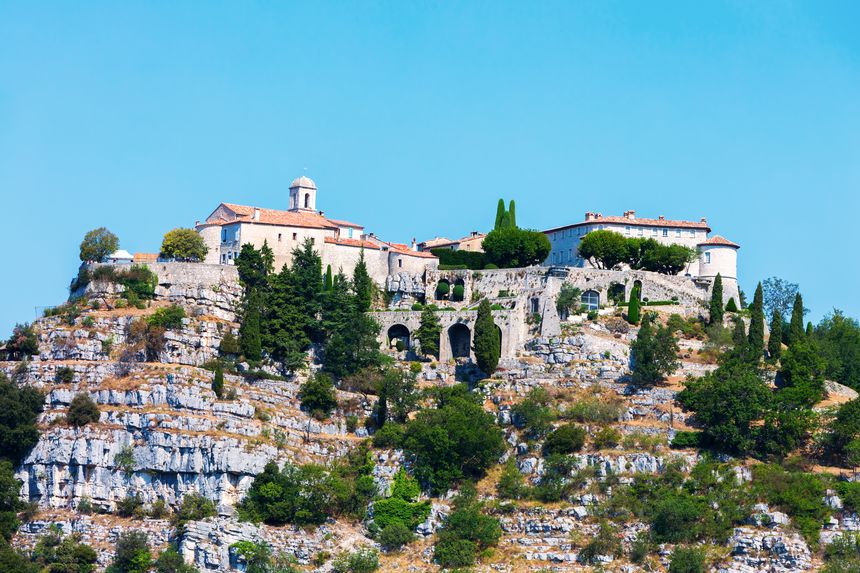

Gourdon
Ranked amongst the most beautiful villages in France, Gourdon is a perched village with beautiful medieval houses surrounding a castle, which has delightful gardens designed by Le Nôtre. The view of the Mediterranean and the valley is breathtaking.
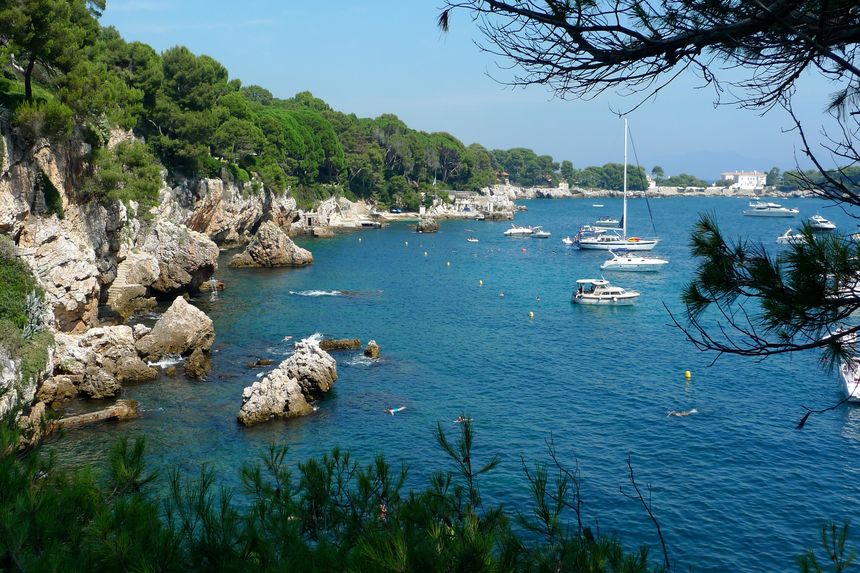

Cap d'Antibes
The Cap d'Antibes is a superb peninsula, with pine trees and mimosas, the splendid beach of Salis, and sumptuous villas. A superb stroll by the sea along the cape showcases some beautiful landscapes.
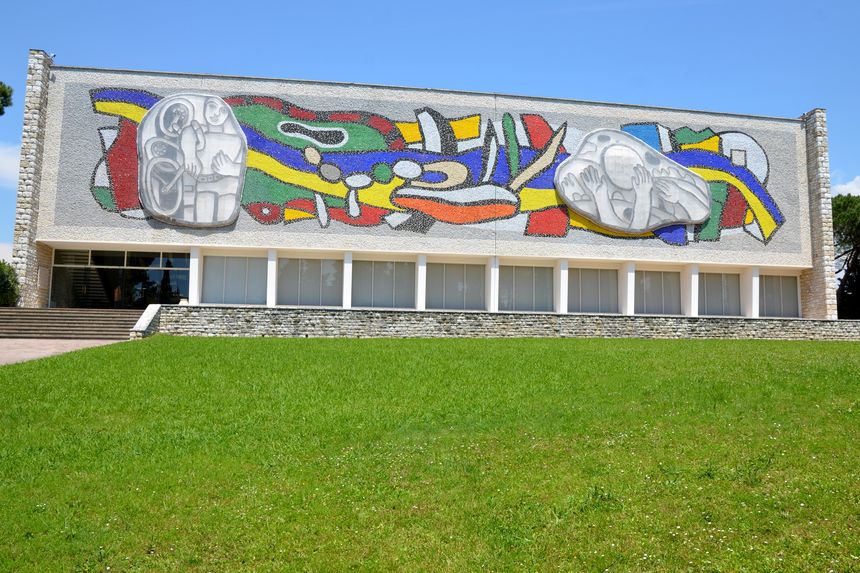

Biot
With its archways and paved streets, this fortified perched village has a lot of charm. It’s mainly known for its glassworks and the Fernand Léger museum, with its mosaic and stained-glass window façade, which displays 400 pieces of the artist’s work. Classified as an "Arts City", Biot has about fifty creators in different trades.
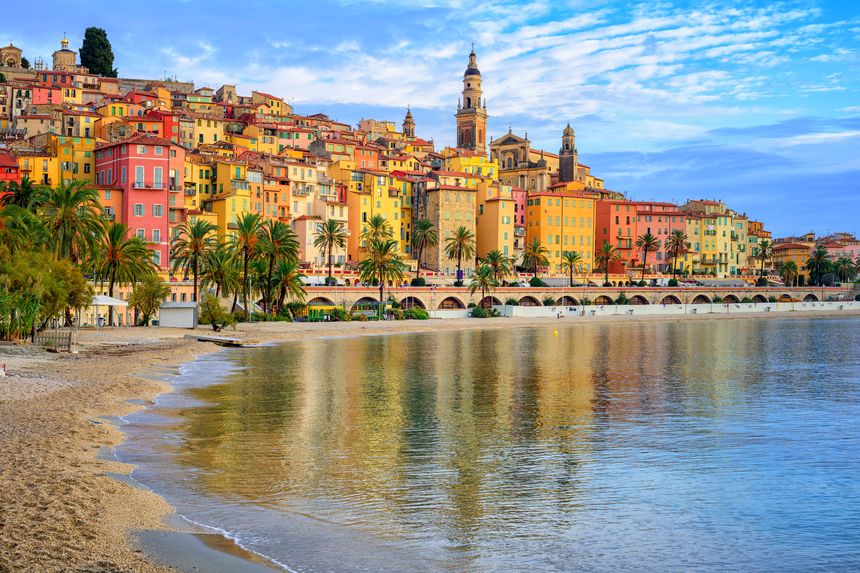

Menton
Nestled between the sea and mountains, Menton, a city of art and history close to the Italian border, can be visited all year round thanks to its mild climate. In February, come and enjoy the famous Lemon Festival and meet local producers. Take the opportunity to stroll through the city’s old streets dotted with colourful houses and don’t miss the St. Michael Basilica, one of the most beautiful Baroque monuments in the city. In springtime, Menton’s fragrant gardens come into bloom and the town is adorned with the most beautiful colours: the Val Rahmeh garden with its exotic plants, the Biovès gardens or the Fontana Rosa garden with its Belle Epoque style. In summer, the city has a pleasant beach resort feel and you can enjoy a swim on long sandy and pebble beaches. On the seafront is the Jean Cocteau museum, a beautiful architectural achievement created by Rudy Ricciotti which exhibits some 2,000 works in a space of 2700m².
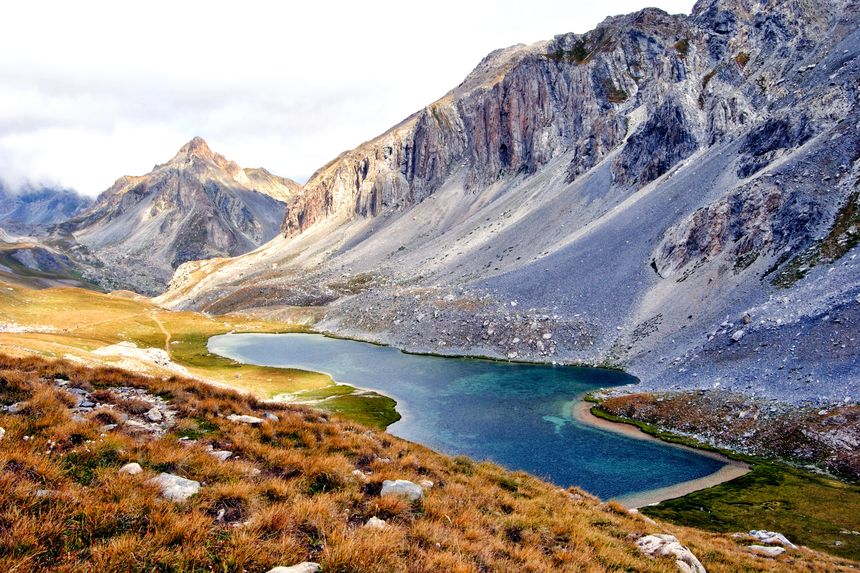

Mercantour National Park
Only 50 km from the sea, the Mercantour National Park has magnificent pine and larch forests; here you can see gentians, rhododendrons and blueberries. It is also home to wolves, ibex, eagles and marmots. The landscape around the Allos glacier lake, located 2,228 meters above sea level, is a beautiful sight both in summer and winter. It spans the Vésubie valley which offers many opportunities for activities including hiking or fishing, in the summer and winter, skiing, snowboarding, sledding and snowshoeing: Valberg (1430-2066), Isola 2000 (1810-2603), Greolieres the Snows (1400-1800), Auron, Colmiane ...
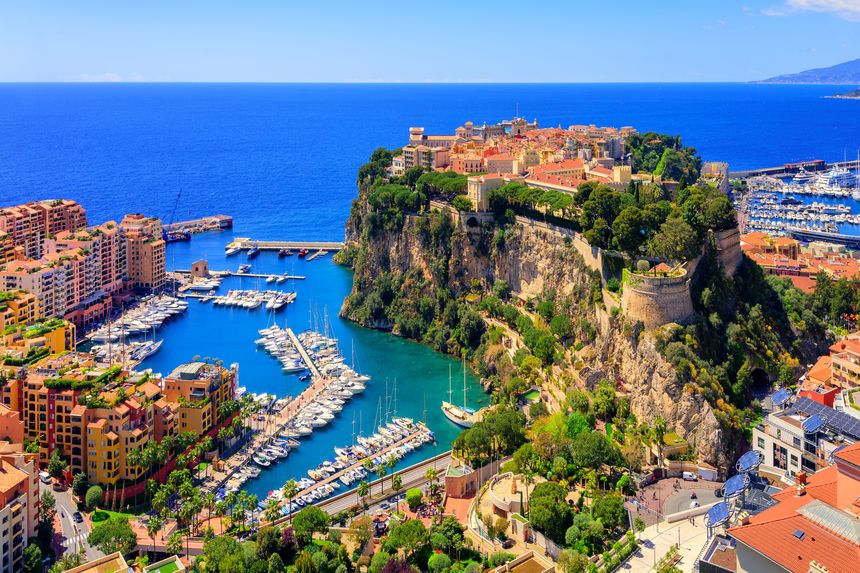

Monaco
This enclave of 2 km2 has a real authenticity and exceptional landscapes with the city’s old quarters perched on a rock. Nestled on a cliffside, 60 metres above the Mediterranean Sea, Monaco Palace is the headquarters of the Oceanographic Museum of Monaco which has a splendid aquarium of some 90 pools and a lagoon with sharks. The exotic garden with its cave and huge winter-blooming cacti is superb; you can also visit the princely residence. Of course, the port is also home to sumptuous yachts while the seafront is adorned with palaces, such as the hôtel Hermitage Monte-Carlo with its winter garden topped with a spectacular glass dome.
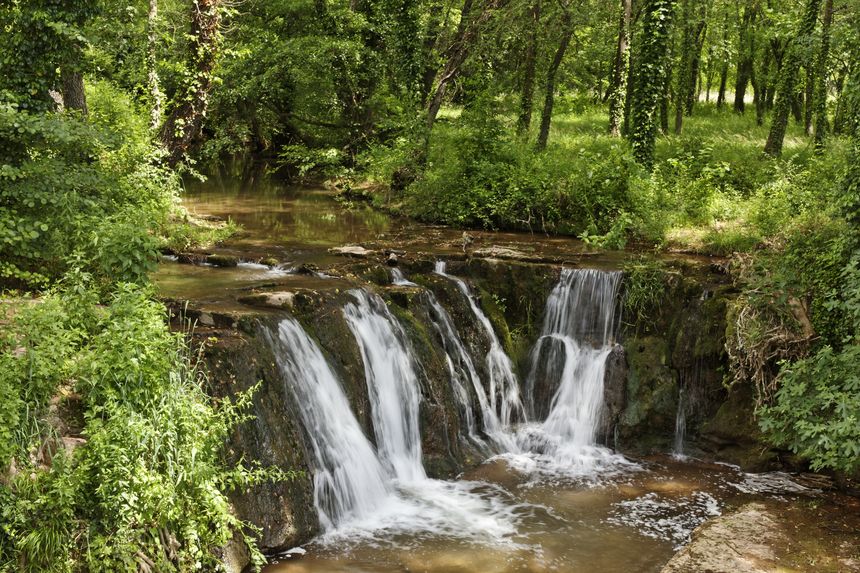

Massif des Maures
From Saint-Raphaël to Hyères, the Massif des Maures, with its scrubland and oak, chestnut and pine forests, offers superb views and beautiful hilltop villages with winding narrow streets: these include Fayence, a gliding hotspot near Lake Saint-Cassien where you can swim and practice water sports, Collobrières, in the middle of cork oak forests, Tourtour, an artists' village, Seillans and Bargeme, situated at 1094 metres above sea level, the highest village in the Var. The last three aforementioned villages are officially classified as amongst the most beautiful villages in France.
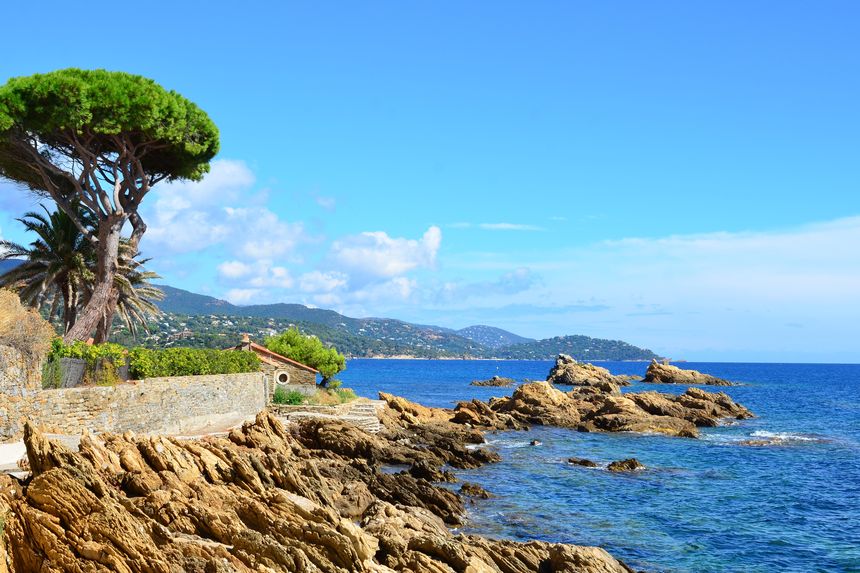

Le Lavandou
At the foot of the Massif des Maures, Le Lavandou combines the Provençal gentle rhythm of life and the attractiveness of a typical beach resort. As the Var’s first fishing port, created just a century ago, the "city of dolphins" has retained a certain intimate charm. A path follows the coastline and offers a magnificent view of the Levant islands and Port-Cros. Its 12 kilometres of coastline is home to numerous beaches frequented by hikers as well as by families with children.
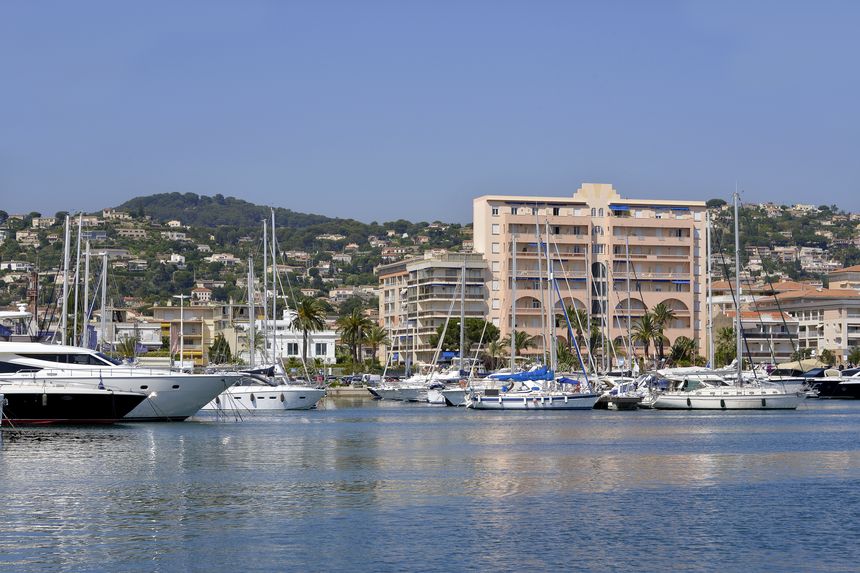

Vallauris
A few steps from Antibes, Vallauris is a small town surrounded by hills. It is known as the world’s ceramics capital. Don’t miss the Pottery Museum and the Magnelli Ceramics Museum, which have some very interesting collections. An "Arts City", Vallauris was popular with the some of the greatest artists and craftsmen, like Picasso and Jean Marais. It also has other wonderful attractions such as the beautiful Château Robert, a luxurious residence with oriental decor and a botanical park of 15 hectares.
Golfe-Juan
Golfe-Juan is the seaside resort of Vallauris. The large sandy beaches, ‘Soleil’ and the ‘Promenade du Midi’, attract mostly families. They are ideally located opposite the Lérins Islands. Still relatively protected from mass tourism, the coastline is adorned with mimosas, laurels and palm trees.
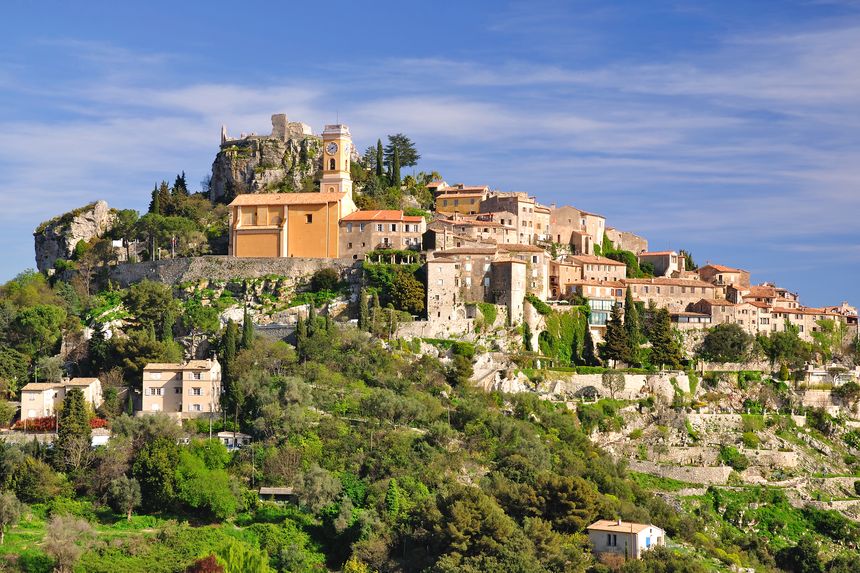

Èze
It’s impossible not to develop a huge crush on the beautiful perched village of Eze. Come and lose yourself in the undulating streets of this medieval-looking hamlet. The ideal thing is to park in the General de Gaulle car park, in front of the tourist office, and continue on foot. Numerous boutiques, perfumeries and art galleries adorn the main road, offering the opportunity to discover local crafts. Once at the top of the village, you can discover the exotic garden and its elegant women sculptures. Take a detour to admire the 5-star restaurant-hotel, La Chèvre d'Or: its park clinging to the side of a cliff is decorated by works of art.
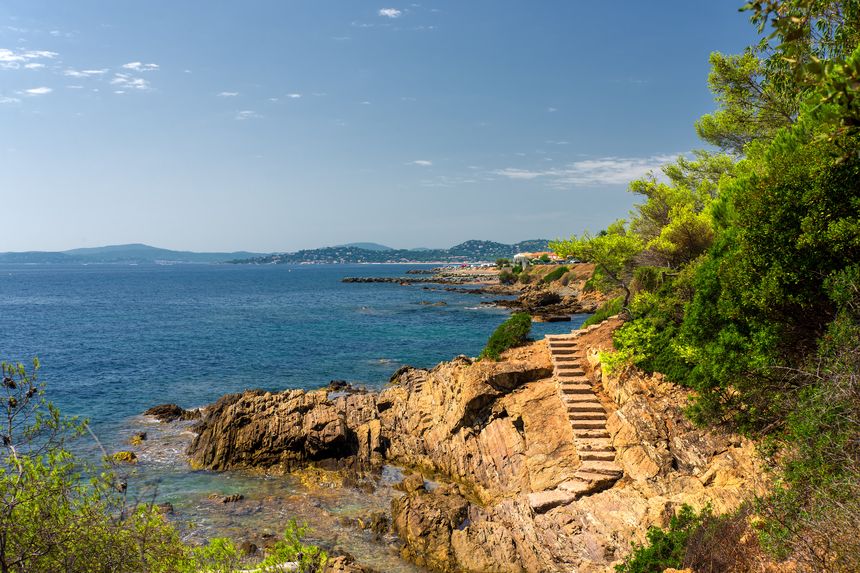

Sainte-Maxime
On the edge of the Mediterranean coast and at the foot of the Massif des Maures, the city of Sainte-Maxime is famous for its mild climate. It’s a good starting point for exploring the Var region and the Nice countryside. Its pretty streets are full of stalls, ice cream parlours, restaurants and quaint cafés that delight holidaymakers. Make sure to climb the steps of the Square Tower, in front of the church, to admire the view of the Gulf of Saint-Tropez.
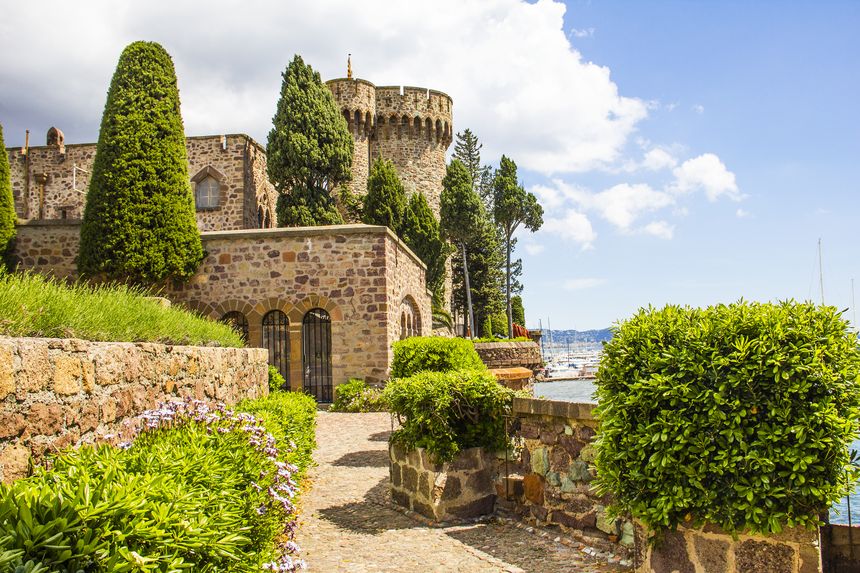

Mandelieu-la-Napoule
A small town on the border of Cannes, Mandelieu-la-Napoule is certainly not devoid of any attractions. Its main point of interest is the Napoule castle which was built in the fourteenth century. The park that surrounds it is classified as a "Remarkable Garden" and many contemporary art sculptures adorn its foothills. If the magnificent panorama of the top of the Castle is not enough for you, then a hike on the San Peyre hill will allow you to breathe in the wild smells of the scrubland. Then, why not go on to discover Mandelieu-la-Napoule’s seven beaches; Robinson, Sables d'Or, La Raguette etc. A well-deserved lazy afternoon awaits you!
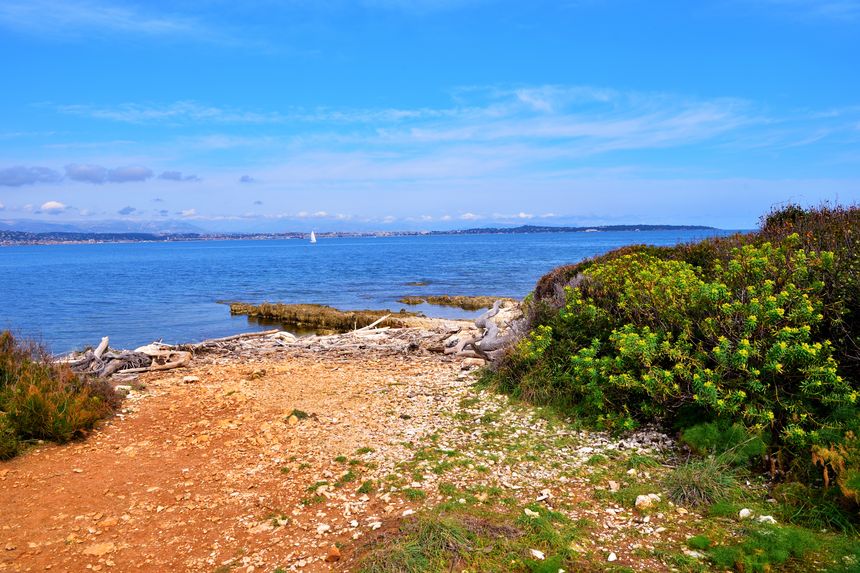

Îles de Lérins (Lérins islands)
Just in front of the bay of Cannes and the Esterel mountains, the Lérins Islands are a real gem to visit especially if you’re just passing through the Côte d'Azur. You will have to take a boat from the port of Cannes to reach the islands, which takes around 15 minutes.
L’Île Sainte-Marguerite (Sainte-Marguerite island)
Stretching for 3 kilometres, Sainte-Marguerite island is the largest. It’s great to enjoy time on the beach but also to walk around the Batéguier lake. This is an ornithological reserve where you can admire the many migratory birds that nest nearby. A former military prison, the Fort Royal is home to a fascinating enigma, that of the Iron Mask. This mysterious detainee would have been imprisoned for years without anyone knowing his identity. The Queen’s lover, twin brother of King Louis XIV, Molière himself ...? It remains a mystery.
L’Île Saint-Honorat (Saint-Honorat island)
Saint-Honorat island is smaller (only 1.5 kilometres in surface area) but just as exciting from a historical point of view. It has been home to the Lérins monks' abbey for 16 centuries and attracts travellers in search of spirituality or simple calm. Others can choose to explore the many tenth century chapels that are dotted around the island or taste the wines produced by the monks since the Middle Ages.
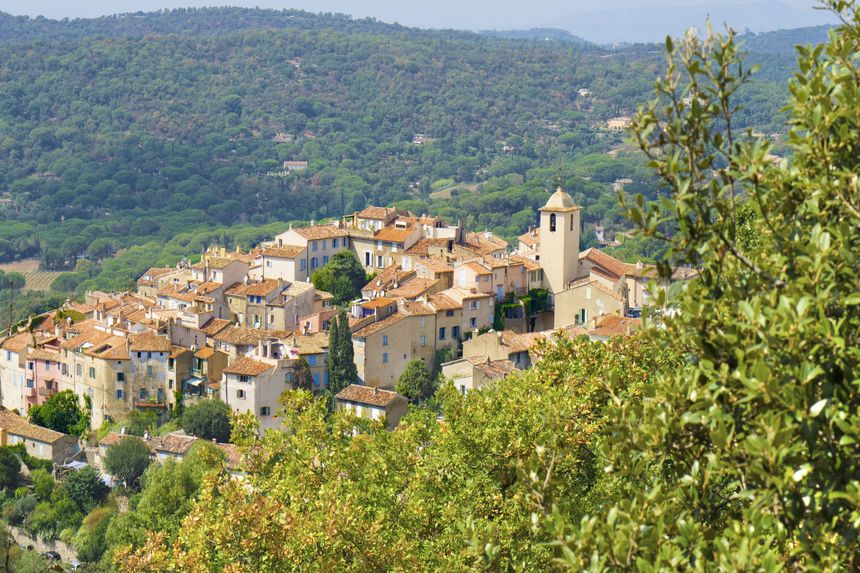

Ramatuelle
Nestled amongst vineyards and hills, Ramatuelle is one of the jewels of the region. At 130 metres altitude, it’s a peaceful place far away from the hustle and bustle of the Côte d'Azur. Its originality consists in its "snail" configuration: the main road climbs slowly up through the village by winding itself through the streets. Small restaurants and local craft shops can be found in ancient cellars carved into the rock. Below the village of Ramatuelle, the famous Pampelonne beach stretches across 27 hectares of sand. It’s the origin of the "myth of Saint-Tropez" because many films were filmed here during the 50's.
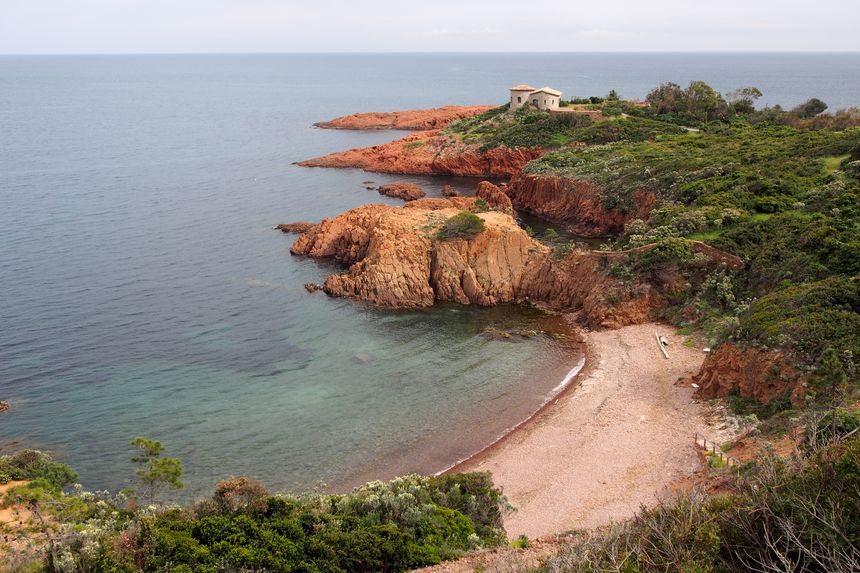

Saint-Raphaël
Saint-Raphaël is both a very popular city and seaside resort. The old town, called "village district", houses the beautiful San Raféu church and its archaeological museum. The daily flower and vegetable market is the perfect opportunity to stock up on the aromas and flavours so typical of southeast France. Once you’ve explored all the winding streets, leave the city behind and go for a swim in the bay of Agay, surrounded by the red rocks of the Esterel mountains, or Anthéor, under the pillars of its majestic viaduct. Don’t forget to take the time to admire the Île d'Or, visible from the beach at Dramont. This rock, topped with an inaccessible high tower, has a truly intriguing beauty and aura of mystery.
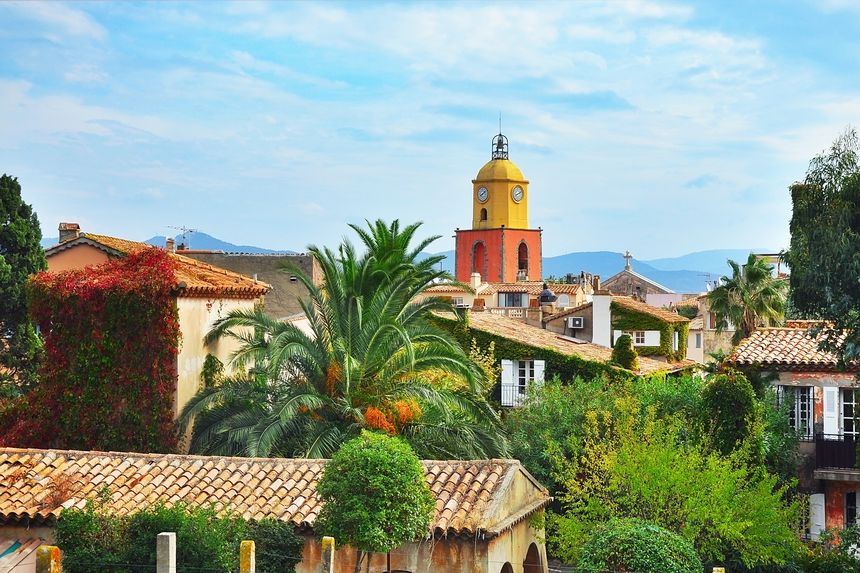

Saint-Tropez
A true legend and probably the most famous village in France: Saint-Tropez certainly doesn’t disappoint with its reputation. Saint-Trop', to those who know it well, has two very different sides. On the one side, its "jetset" side attracts those who want to see and be seen in the bars and upscale restaurants along the beachfront. Here, the champagne flows during social evenings and luxurious yachts line up in the port attracting envious glances and photo enthusiasts. On the other sides, its enclosed streets have maintained a certain charm, all the more so with the lingering smell of flowers and the heat of the sun. After drinking a cold glass of pastis and watching the locals play pétanque on the famous place des Lices, why not climb to the Saint-Tropez citadel, take a tour around the ruins and marvel at the spectacular view. Also of interest is the modern museum of maritime history which gives you the opportunity to discover the life of mythical sailors.
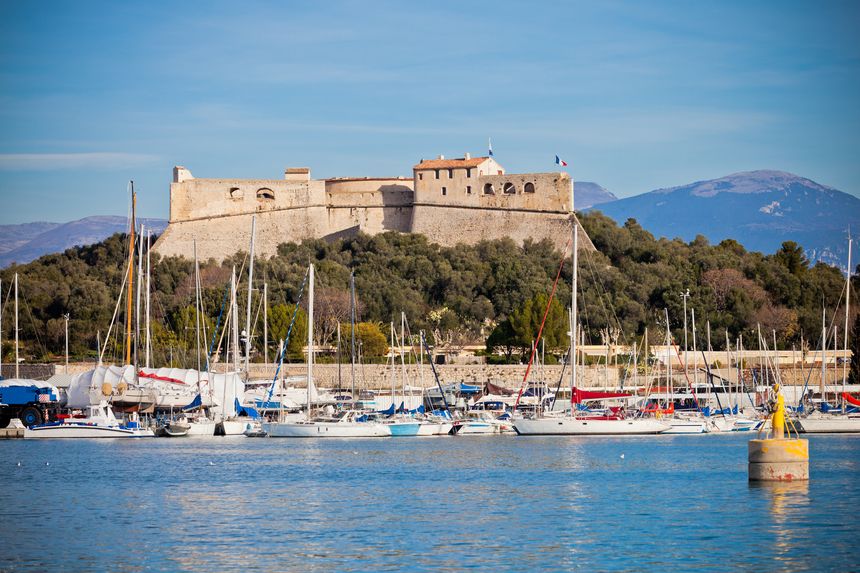

Antibes / Juan les Pins
Antibes is one of the flagship cities of the Côte d'Azur. With the colourful facades of its houses and pretty cobbled streets, strolling through Old Antibes is a very exotic experience with numerous shops selling artisanal decorative items and delicious local specialties. Onwards to Port-Vauban, the largest marina in Europe, where you can take a boat trip for a few hours or try your hand at water sports. You’ll be impressed by the huge yachts that moor up during the summer season. Finally, the Cap d'Antibes is a must-do walk: the path along the coast will leave you breathless with its panoramas and breathtaking views of castles and villas in wealthy Antibes. With spectacular sea views, the Hotel du Cap-Eden-Roc is renowned for being one of the most beautiful in the world ...
Juan les Pins
Juan-les-Pins is the seaside resort in Antibes. It’s especially good in the evenings with lots of lively nightlife to enjoy. Beaches, bars and restaurants line the entire beachfront. To get away from all the hustle and bustle, go for a walk in the pinewood park where the greenery provides pleasant shade.
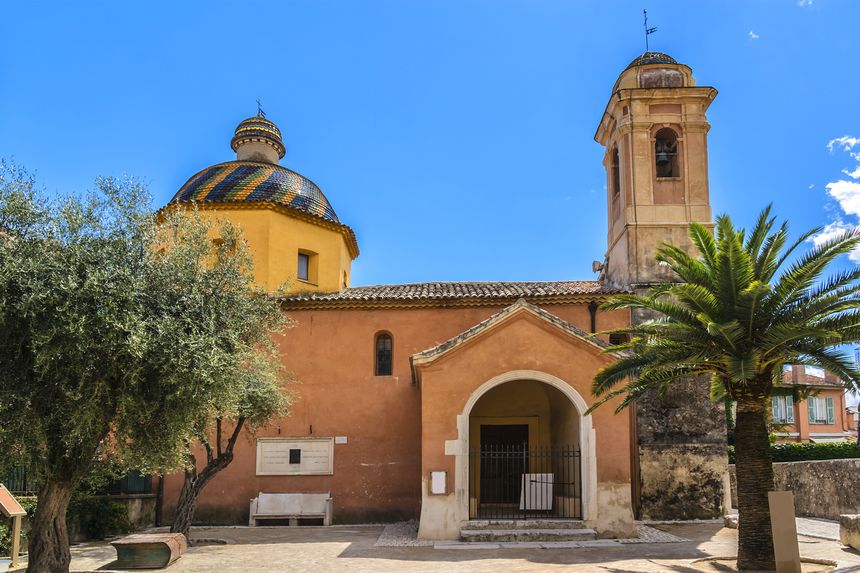

Vence
Back in time to the hilltop village of Vence. This village has always been run by painters and sculptors (Matisse, Chagall, Dufy ...). Even today, the "Cité des Arts" houses an impressive number of painting and sculpture galleries. As an ancient Roman city, Vence has preserved many remnants including ruins, a triumphal arch and partially destroyed ramparts. Many religious buildings are worth visiting, such as the cathedral which houses a sarcophagus from the fifth century. The Chapelle des Penitents Blancs and its Renaissance bell tower are also worth a visit.
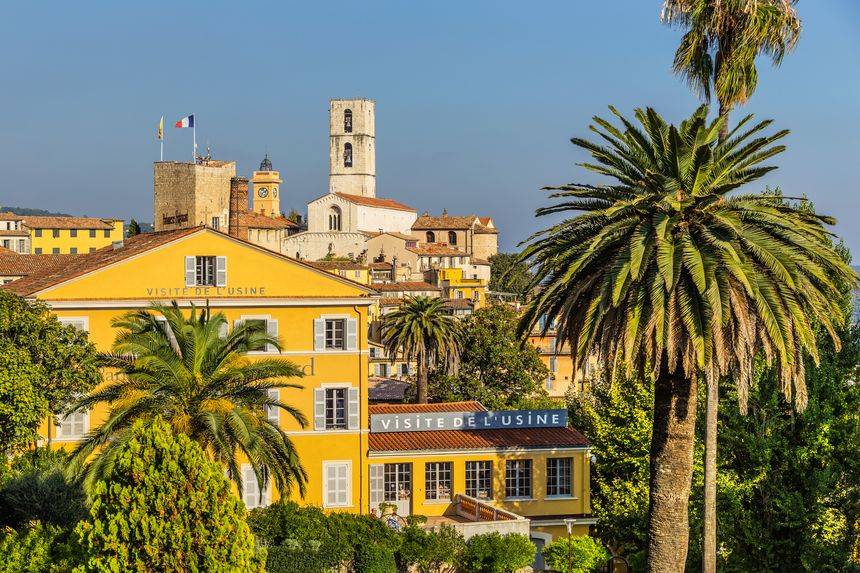

Grasse
How can you mention Grasse and not think of its famous perfumeries? The historic Fragonard factory, the Molinard perfumery and the Galimard museum open their doors for a fascinating insight into the world of scent. You can find out all there is to know about making perfumes and even leave with a carefully selected fragrance. Grasse is also a city renowned for its history: the sister of Napoleon Bonaparte, Queen Victoria and the actor Dirk Bogarde have all stayed here and have left evidence of their visit. The magnificent mansions from the seventeenth to nineteenth century, which can be seen everywhere around the narrow streets, offer a nostalgic spectacle of years gone by. Place du Puy and its cathedral are the high points of this walk back in time.
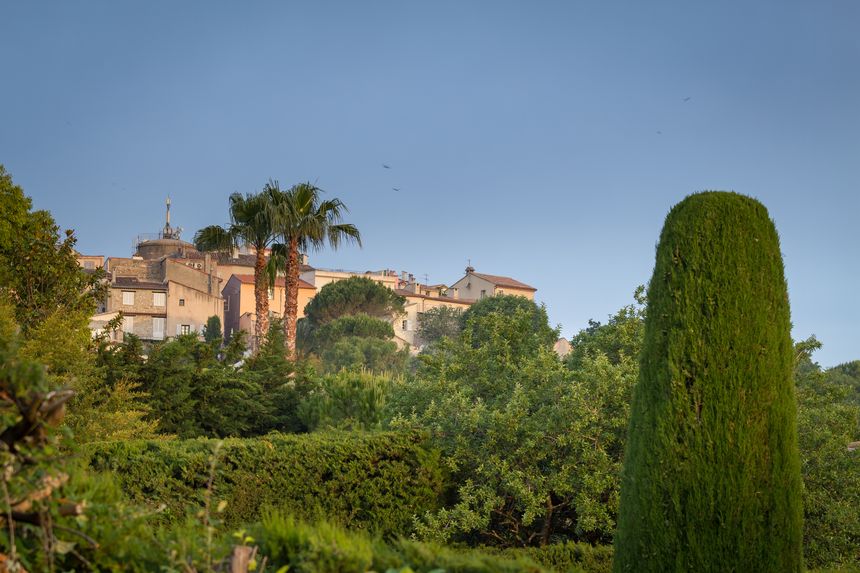

Mougins
The pretty medieval village of Mougins is located in the Côte d'Azur countryside. Its charming narrow streets are home to a fountain, a church and an art gallery. Picasso, Christian Dior, Catherine Deneuve, Jean Cocteau, Winston Churchill, Jacques Brel, Edith Piaf ... Countless celebrities have chosen Mougins as their holiday resort. Mougins is also known for being a "Culinary City". More than 40 restaurants serve refined food that will delight the taste buds of food lovers everywhere (especially those with a well-filled wallet ...).
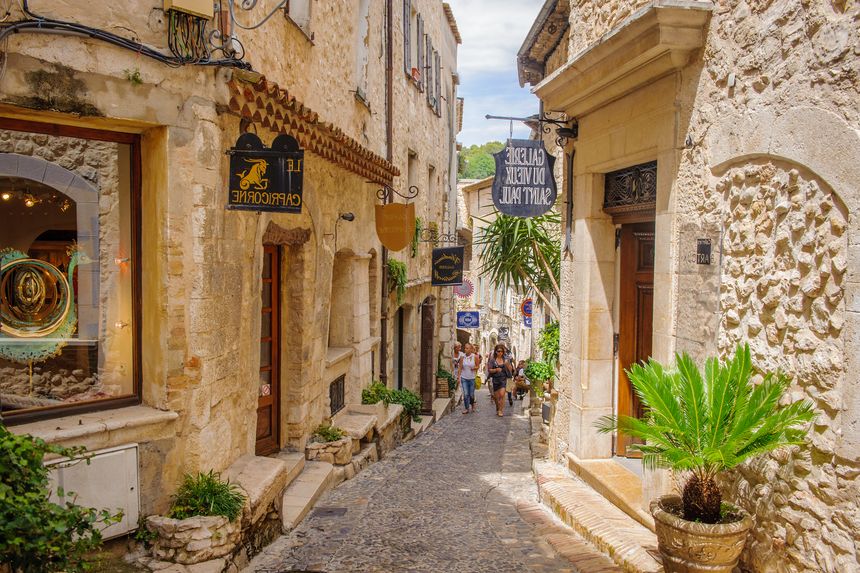

Saint-Paul-de-Vence
The most beautiful village in Provence? Most probably! The lovely hilltop village of Saint-Paul-de-Vence is located just 15 minutes from the sea, but the view from its summit is worth the detour. A haven for artists, it’s still home to many art galleries and artisans. Strolling along its medieval lanes takes you back to the old days when cars and modern civilisation didn’t exist. Take the Rue Grande de la Porte Sud to Porte Royale and admire the houses with beautifully cut stone facades. Amongst the maze of streets, you’ll come across elaborately carved porches, singing fountains and even groups of villagers enjoying a game of pétanque (boules game) ... Climb to the top of the ramparts to enjoy the panorama and don’t forget to visit the Maeght Foundation. This museum of modern art exhibits sculptures, paintings, collages and ceramics in the heart of a beautiful park.
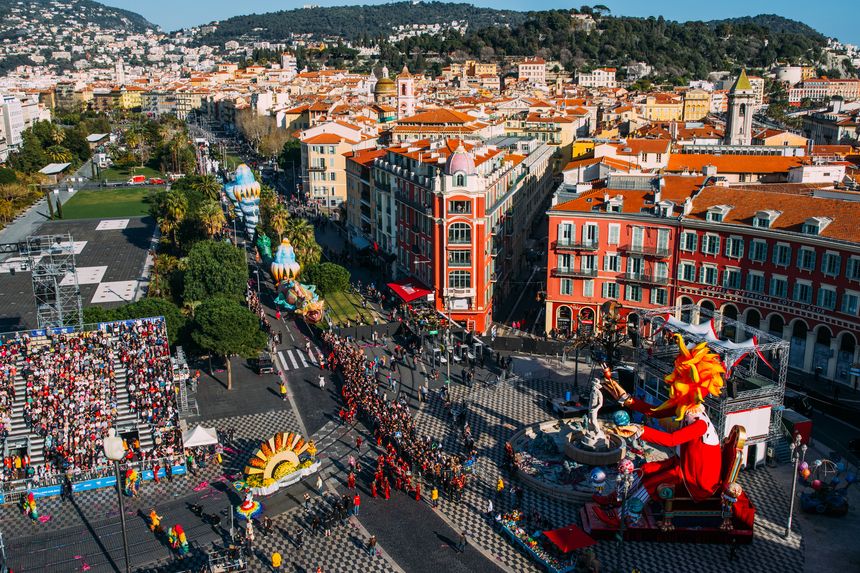

Nice
Nissa la Bella! As the largest city on the Côte d'Azur, Nice is often the point of entry for holidaymakers arriving at its airport (which is also famed for its beautiful views during take-off and landing). This beautiful city is certainly not lacking in things to do, whatever the time of year ... The boulevard Jean Médecin, the main commercial area, and Place Masséna are considered the heart of Nice. This is where the famous Nice carnival takes place, featuring huge floats making fun of politicians.
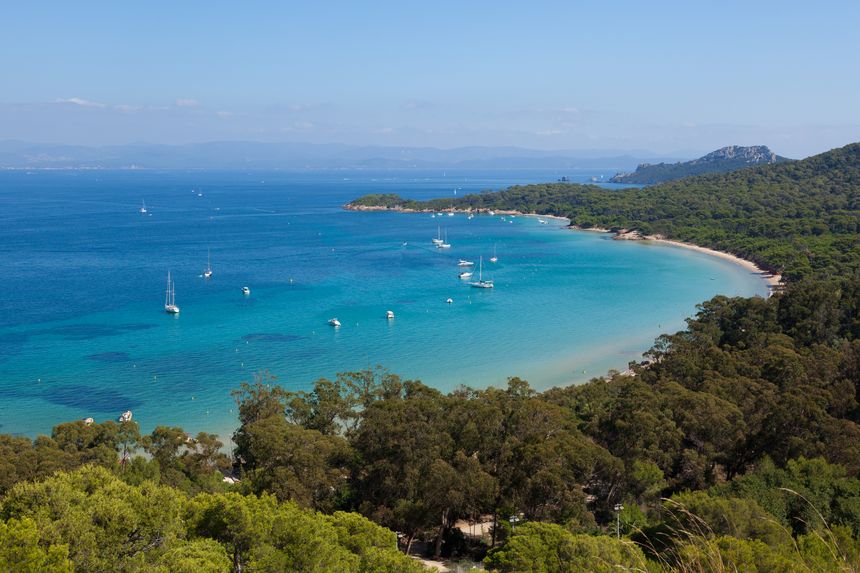

Hyères Islands (Porquerolles, Port Cros et le Levant)
The so-called "golden islands" certainly deserve their enchanting reputation ... There are three Hyères islands in total and they are located opposite the Giens peninsula.
Porquerolles
Porquerolles is the largest and most visited of the three islands. It is reached by boat in just 10 minutes from Hyères port. This little paradise was ranked "Heart of the National Park" in 2012 and is perfectly preserved. As soon as you reach the village, venture inland where the trees and plants maintained by the Botanical Conservatory emit a beautiful scent. The south coast offers a breathtaking view of the sea from the cliffs. Finally, the three white sand beaches almost conjure up images of an island on the other side of the world!
Port Cros
Port-Cros is the least unspoilt of the three islands and also the most "natural". There are no cars or bikes here: it can only be discovered on foot, thanks to the three hiking trails that immerse you in the heart of nature. A protected island since 1963, the island has hardly been touched by human activity and has a very exotic feel. Small creeks offer a welcome break for swimming and snorkelling.
Le Levant
The island of Levant is probably the least popular with tourists because it mainly appeals to ... naturists. However, this island is a real delight for walking enthusiasts. Many paths meander through the scrubland and the fauna and flora are well-preserved. When arriving at the port, go for a walk to the village: the 20-minute climb is quite steep but promises a superb panorama.
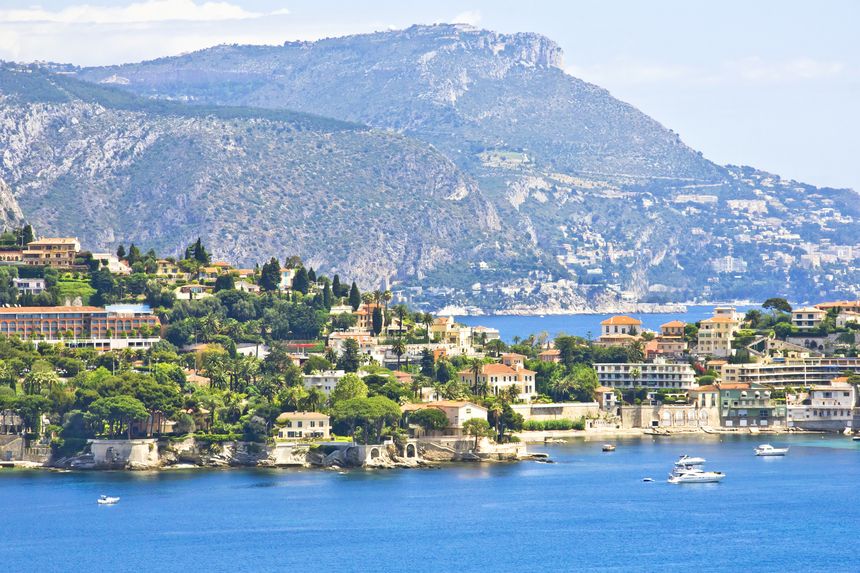

Saint-Jean-Cap-Ferrat
Want to get away from the tourist crowds? Saint-Jean-Cap-Ferrat still seems to escape the hordes of summer visitors and offers magnificent calming panoramas. It takes just one hour to walk around the paved peninsula where you get to discover all the beauty of the coastline under the shade of pine trees. Small inlets open up to reveal gorgeous pebble beaches with crystal clear waters glistening in the sun. Afterwards you can climb up to the Saint-Hospice chapel which looks out over the peninsula. Its bronze Virgin Mary statue, 1.40 m high, is a site to be admired.
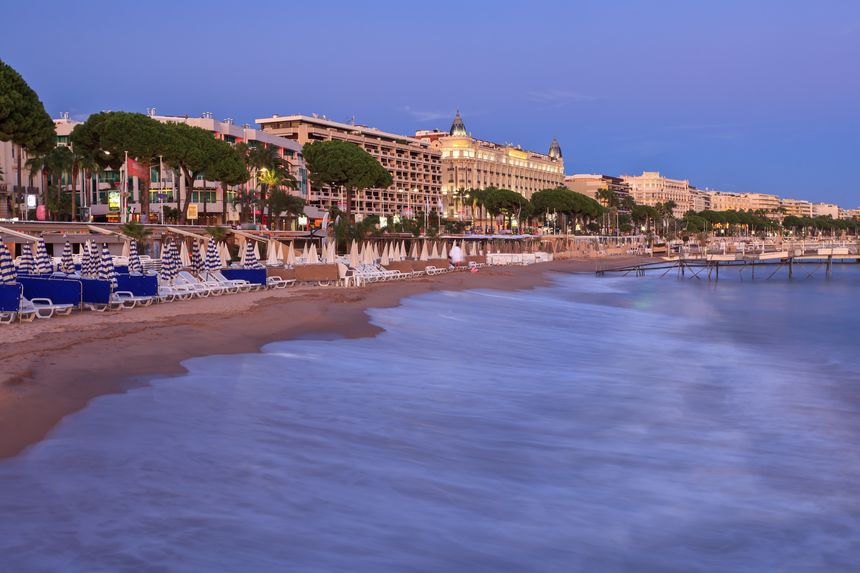

Cannes
Although the city officially comes to life once a year, with the famous Cannes Film Festival and its parading movie stars, it has many other assets to offer. The boulevard de la Croisette, along the seafront, is a must for taking in the Cannes ambiance. Then why not go for a walk in the Suquet district, the oldest part of the city, which includes relics dating from the Middle Ages. Built on a hill to protect itself from pirate attacks, its crooked lanes lead down to the Old Port. The Musée de la Castre has a beautiful collection of antiques and a climb to the top of the square tower will reward you with a breathtaking view of the coast. Don’t forget to go for a walk around the Forville market, known for the quality of its products and the vibrancy and friendliness of its traders.
You may also like
-
Flights to the French Riviera
All you need to know before buying your plane ticket
-
Tourist maps
Region, attractions and distance map the French Riviera !
-
Hotel or vacation rental?
Find your dream accommodation in the French Riviera at the best price...
-
When to go?
Be sure to visit the French Riviera at the best time of year!




